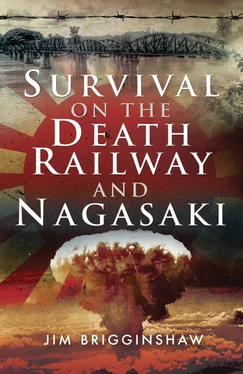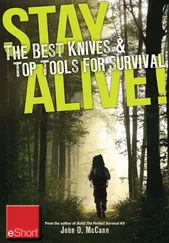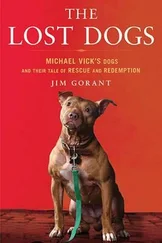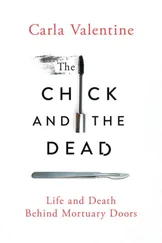Later on during the construction of the Burma Railway, crude anaesthetics were made from herbs and jungle plants, but they weren’t suitable for operations, and provided relief only as a local anaesthetic.
Operations continued to be hideously painful, and usually proved fatal.
Peter Murphy was sent to the Fifty-Kilo hospital with a badly ulcerated leg, which had to be amputated above the knee. He was recovering well when dysentery struck, and for weeks, his body, already wasted by starvation, gradually faded away until eventually he died.
Peter, the gambler who would tell people he was so unlucky that if it was raining five-pound notes he’d pick up a summons, had played his last card.
His mates buried him near the railway line that had cost him his life. Reminiscing afterwards, they said it was ironic that flies, always Peter’s pet hate, were responsible for the dysentery that had contributed to his death.
Peter’s fly fetish had started in Australia, on the railway platform at tiny Bororen, in Queensland. Famous for its meat pies, Bororen was a must for hungry troops going back to camp from leave. To get to the pie vendor first, Peter had hung outside the carriage and jumped before the train stopped. He’d won the race and bought out the entire stock of pies, intending to make a profit selling them to the other passengers.
First, however, he intended to have his fill. He bit into a pie and was horrified to uncover a fly. Disgusted, he tossed the pie out the carriage window. The rest of his stock followed, and Peter vowed never to eat another meat pie. It was the start of his hatred of flies.
He was in a Queensland pub swatting at a persistent one that was annoying him when the barmaid said, ‘Don’t you like flies?’
‘I hate flies’, Peter told her.
‘I didn’t like flies, either’, she said. ‘Until I opened one once.’
Peter would grin as he told the story. ‘I’m so innocent it took me half an hour to figure out what she meant.’
As Peter was buried beside the railway line, his mates all had tales to tell about his notorious bad luck.
Jimmy Harris remembered the time Peter backed Morse Code in the Melbourne Cup at 10/1. Jimmy said the horse was in front with fifty yards to go when it fell. ‘Pete said it was typical of his luck’, Jimmy recalled.
Bodero nodded. ‘Anything Peter backed found all sorts of ways to lose. We were at a dog meeting in Rockhampton and he’d backed one in the hurdle race. The only thing was, the dog had a problem. When it came to the last hurdle, it wouldn’t jump, and everything would pass it.’
‘Sounds like Pete, backing a hurdler that wouldn’t hurdle’, someone said.
‘Yeah, but this one was a moral’, Bodero said. ‘The dog had been given a kill near the winning post and would now clear the last hurdle and keep going looking for blood.’
‘Don’t tell me Pete had a win for a change?’
‘The dog’s streets in front, it soars over the last hurdle and Peter’s screaming his head off, kissing his betting slips. Then the bloody mongrel stops, lifts its leg and pisses on the hurdle.’
‘Poor bloody Peter’, his mates clucked sympathetically.
‘Worst part’, Jim said, ‘he’d told a couple of the girls from a local brothel about this sure thing of his and they were very angry about doing their dough. We had to clear out before the girls got to him.’
When the laughs stopped, Sol Heffernan revived memories of what Peter had done to Dickie Barnes when they were doing their brigade training at Bathurst.
Part of the training was on sheep properties, where they were required to vault fences of wire netting topped with barbed wire. Dickie Barnes, the army’s oldest soldier at sixty years of age and just about its smallest at a touch over five feet tall, had trouble hurdling the fence.
Peter volunteered to help him over. He lifted Dickie onto the fence and left him there, his legs straddling it, his backside on the barbed wire, both arms wrapped around a post like a koala. Nobody answered Dickie’s calls for help.
‘I reckon he’d have shot Peter that day’, Bodero said. ‘The bugger would do anything for a laugh.’
‘Remember the wasps and Kingie the Pom?’ Sol Heffernan said.
Everybody remembered what Peter did to Billy King.
The lanky Englishman had migrated before the war and become a kangaroo shooter in western Queensland, where he’d developed his skills with a rifle. When he joined the AIF, he was made a sniper.
He was with a section on patrol in Malaya in wild country between Kota Tinggi and the east coast. The only tracks through the jungle were worn by foraging animals, and bark on the tree trunks had been torn by tigers sharpening their claws. Dangerous as these predators were, the paperbark wasps were more of a hazard. Bright yellow, they were ferocious and had a vicious sting.
As the Englishman’s patrol forced its way through the jungle, it disturbed a huge nest of the wasps. The men ran, but not fast enough, and the wasps inflicted a lot of pain before they were out of range.
They were sitting in a jungle clearing nursing their stings when Peter Murphy sneaked up behind sniper Billy King, jabbed him behind the ear with a pointed stick and buzzed like an angry wasp.
Kingie screamed and leapt high into the air.
When he heard the laughs and realised he’d been had, he was furious.
‘He was another one who was going to shoot Peter’, Sol said. ‘I don’t think Kingie ever forgave him.’
Now, as Peter’s mates piled stones on his shallow grave beside the Burma Railway, they fell silent.
Peter, the larrikin gambler who’d kept them laughing, would be missed.
From the Seventy-Five-Kilo camp, Bodero’s work party moved to the Hundred and Five-Kilo camp where the railway entered country more rugged than any they had previously encountered. Bridges had to be built over deep, fast-running streams. With little equipment, the work had to be done by hand.
In many places the railway line wound around the face of cliffs, some of which had a gradient of thirty-five degrees. Rock faces with sheer drops of a thousand feet often had to be levelled to form a bed for the line.
Timber for the bridge work was plentiful, huge teak trees with a girth of up to twenty feet and trunks as straight as a gun barrel for a hundred feet or more without a branch. Teak is one of the hardest of hardwoods, and the prisoners had to fell the towering trees with blunt axes and saws.
Piles to support the bridge decking were put in by hand using a primitive pile-driver, an iron weight suspended by a rope through a pulley mounted on scaffolding. A team of prisoners would haul the weight to the top of the scaffolding, the Japanese would call ‘ichi, nee, san, shi (one, two, three, four)’, and the rope would be released.
When the piles were driven and the decking was ready to be laid, girders were secured to the piles by d-spikes, pieces of iron shaped like the letter ‘d’ with both ends sharpened.
The decking was lashed to the girders with ‘Burmese wire’, a rope made from the bark of a tree that grew in abundance in Burma. When pounded, the bark became stringy. This was teased and plaited until it became a strong, durable rope.
On one bridge over a deep ravine, the piles had been driven and the girders were being laid for the decking when heavy overnight rain turned the stream below into a raging torrent. A Japanese engineer working on the bridge with the prisoners lost his footing and tumbled into the rushing water. Without hesitating, two of the Australian prisoners dived in after him.
It was a while before the two prisoners returned to the bridge alone. They’d been washed a long way downstream, they said, and were sorry but they’d been unable to save the Japanese engineer. Their rescue efforts drew high praise from the Japanese, who were amazed that prisoners would risk their lives to save an enemy.
Читать дальше












